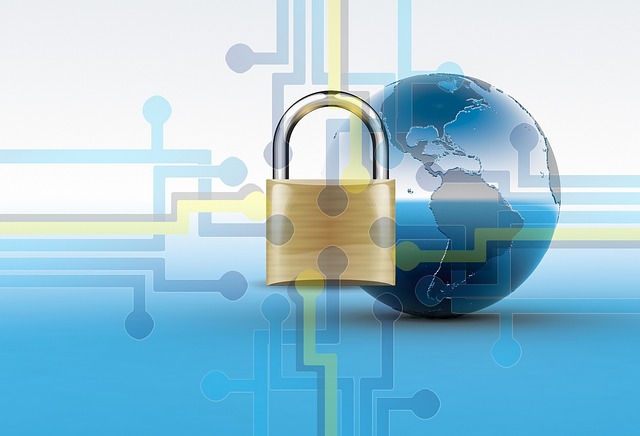In today’s interconnected world, where personal and professional information is stored and transmitted electronically, password security is more crucial than ever. With cyberattacks on the rise, it’s imperative to adopt robust cybersecurity practices to protect your digital assets and sensitive information. This comprehensive guide will delve into the world of cybersecurity password best practices, equipping you with the knowledge and tools necessary to fortify your online defenses.
The Importance of Password Security
Why do Passwords Matter? Passwords are the most common form of authentication in the digital realm. Whether it’s your email, social media accounts, online banking, or even your workplace systems, passwords are the keys that grant or deny access to your digital world. This makes them a prime target for cybercriminals.
A strong password is your first line of defense against unauthorized access. Without one, your personal and financial information is at risk, and the consequences can be dire. Cyberattacks, including data breaches, identity theft, and financial fraud, can wreak havoc on individuals and organizations alike.
The Cost of Weak Passwords
The price of weak passwords is high, and the statistics are staggering. Data breaches caused by compromised passwords cost businesses billions of dollars each year, tarnishing reputations and eroding customer trust. Equifax, Target, and Yahoo are just a few examples of high-profile companies that suffered massive data breaches, all stemming from weak password security.
For individuals, the consequences of weak passwords can be just as devastating. Stolen identities can lead to financial ruin, while hacked email accounts can result in the compromise of personal and sensitive information. It’s not an exaggeration to say that a single weak password can open the door to a cascade of problems.
Understanding Password Complexity
To create strong passwords, it’s essential to understand the key elements that contribute to their strength.
Length Matters
Longer passwords are inherently more secure. A password’s length increases the number of possible combinations, making it exponentially harder for attackers to guess or crack. Aim for a minimum of 12 characters, but longer is always better.
The Power of Diversity
Diversity in a password means using a combination of uppercase and lowercase letters, numbers, and special characters. A diverse password significantly increases the complexity and reduces the likelihood of it being cracked through brute force attacks. Avoid using easily guessable sequences like “123456” or “password.”
Avoiding Predictable Patterns
Steer clear of easily guessable patterns like “password123” or common words and phrases. Hackers use dictionary attacks and automated tools to crack such passwords quickly. Instead, opt for random combinations of characters that are difficult to predict.
Creating Strong Passwords
Now that you understand the fundamentals of password complexity, let’s explore how to create strong passwords.
Passphrases: The New Frontier
Passphrases are a modern approach to password security. They involve stringing together multiple words, making them easier to remember and harder to crack. For example, “PurpleElephant$Jumping*Over!Roses” is a strong passphrase that combines various elements of complexity.
Consider using a memorable phrase or sentence that has personal significance to you, but modify it with numbers and special characters to enhance its strength. Just be sure it’s long enough to meet the recommended length requirements.
Avoiding Common Mistakes
Avoid common pitfalls when creating passwords, such as:
- Using easily guessable information like your name, birthdate, or “password.”
- Reusing passwords across multiple accounts.
- Writing down passwords on sticky notes or leaving them in easily accessible places.
- Sharing passwords with others, even if you trust them.
Utilizing Password Managers
Password managers are invaluable tools for securely storing and managing passwords. They generate strong, random passwords for you and store them in an encrypted vault. All you need to remember is the master password for the manager itself. Popular options like LastPass, Dashlane, and 1Password offer user-friendly interfaces and robust security features.
Password managers not only enhance security but also save time by automatically filling in login credentials for websites and apps. This eliminates the temptation to reuse weak passwords.
Password Storage and Encryption
The way passwords are stored and transmitted plays a critical role in their security.
Hashing and Salting
When you create an account or set a password, the service should store it securely using cryptographic techniques like hashing and salting. Hashing involves converting the password into an irreversible string of characters, making it nearly impossible to reverse engineer. Salting involves adding a unique piece of data to each password before hashing, further enhancing security.
Two-Factor Authentication (2FA)
Two-Factor Authentication (2FA) adds an extra layer of security by requiring you to provide two forms of identification before granting access. Typically, this involves something you know (your password) and something you have (a mobile device or token). Enabling 2FA whenever possible greatly enhances your account’s security.
Biometrics: The Future of Authentication
Biometric authentication methods, such as fingerprint recognition and facial recognition, are becoming more common. These methods rely on unique physical traits, making it exceptionally challenging for unauthorized individuals to gain access. While they’re not entirely foolproof, they add another layer of security to your digital life.
Password Change and Rotation Policies
The topic of password change and rotation policies has been a subject of debate in the cybersecurity community.
The Debate on Password Rotation
Traditionally, it was common practice to require users to change their passwords every few months. However, recent studies and industry experts have questioned the effectiveness of this approach. Frequent password changes can lead to weaker passwords, as users may resort to easily guessable variations or write them down.
Instead of frequent changes, consider implementing password rotation policies based on risk assessment. Encourage users to change their passwords when there’s a security breach or if they suspect their credentials have been compromised.
Setting a Practical Schedule
When changing passwords, ensure that the process is straightforward and user-friendly. Implement a system that prompts users to change passwords when necessary and provides clear instructions on how to do so securely.
Protecting Passwords from Phishing and Social Engineering
Even the strongest passwords can be compromised through phishing attacks and social engineering.
Recognizing Phishing Attempts
Phishing is a deceptive technique used by cybercriminals to trick individuals into revealing their login credentials or personal information. Be vigilant and watch for signs of phishing attempts, such as suspicious emails or websites, and never click on links or download attachments from unknown sources.
Social Engineering Awareness
Social engineering attacks rely on manipulating individuals into divulging sensitive information. Be cautious when interacting with unknown individuals or providing personal information over the phone. Always verify the identity of the person or organization you’re communicating with, especially if they request sensitive information.
Educating yourself and your organization about these threats is critical in preventing unauthorized access to your accounts.
The Future of Passwords
As technology evolves, so does the landscape of cybersecurity and authentication methods.
Beyond Passwords: Emerging Technologies
The future of authentication is likely to move beyond traditional passwords. Emerging technologies such as blockchain-based authentication, zero-trust security models, and continuous authentication are gaining traction. These approaches aim to provide more secure and user-friendly ways to access digital resources.
The Human Element
While technology plays a crucial role in cybersecurity, it’s essential not to overlook the human element. Security awareness training and fostering a cybersecurity culture within your organization are vital components of protecting sensitive information. Encourage employees to follow best practices, recognize threats, and report suspicious activities promptly.
Conclusion
In an era where cyber threats are constantly evolving, strong password security is your first line of defense. By understanding the importance of password complexity, creating strong passwords, using password managers, and embracing modern authentication methods, you can fortify your digital fortress against malicious actors.
Remember that cybersecurity is an ongoing process. Stay informed about emerging threats and technologies, and adapt your security practices accordingly. By following the best practices outlined in this guide, you can significantly reduce the risk of falling victim to cyberattacks and safeguard your digital world.

